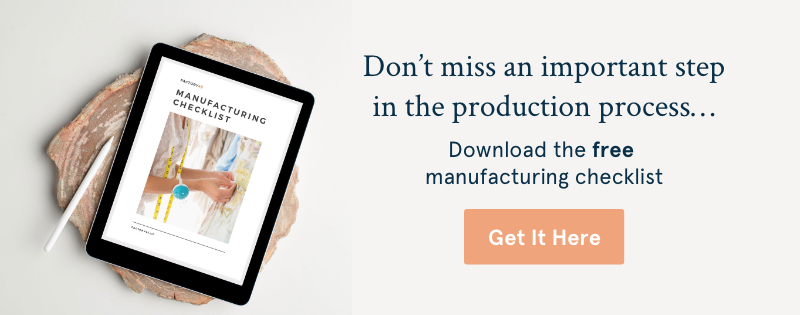The Reason New Designers Get a Bad Rep
I’m in the business of working with startups and new designers. A lot of the people I work with don’t have a fashion design background. They’re entrepreneurs with a cool idea, but other than that, they don’t have much knowledge on how to get started.
One of the reasons I started Factory45 was because I know there aren’t many industry veterans who want to “deal with” new designers. I’ve had three people in the past week say, “Oh yeah, so-and-so doesn’t even attempt to work with college grads / newbies / design students / etc.”
The fact is, new designers have a bad reputation. If you’re starting to squirm a little, just hear me out.
I’m not saying that you are necessarily to blame for the bad rep, but there are other people who have “spoiled it” for others.
For the most part, suppliers would rather not work with you, sew shops would rather not work with you, factories would rather not work with you. And this is why fashion startups have such a hard time getting started.
Manufacturers in the States have been doing this long enough to know that 9 times out of 10 it just isn’t worth their time to take on the additional baggage of someone new to the industry. They have a responsibility to the construction and production of a product, but they don’t have a responsibility to educate you.
Let me give you an example of an all-too-common email that the vast majority of project managers have probably received:
“Hello – I have a patent for an innovative new apparel product. I’m looking for a production partner to work with – do you do apparel? Are you willing to sign an NDA? What next steps do I need to take? Thanks, [name]”
If you don’t see anything wrong with this example please keep reading.
I want to break this down because there are few different pieces that we should look at:
“PATENT”: If you are trying to patent an apparel product, you are wasting your money. The only person who will tell you otherwise is a lawyer (for obvious reasons). There are .01% of apparel products in the world that are unusual enough to legally protect. Even then, someone else could come in, rip off the design, change one button and your product is no longer protected.
I know the warm and fuzzy feeling you may get from “legitimizing” your company, but trust me, you’re wasting valuable time and money that could be spent on finding out if your customers even want your product.
“INNOVATIVE NEW APPAREL PRODUCT”: This says nothing. There is no sew shop, factory, manufacturer or supplier that is going to take you seriously (or even know how to respond to you) if you don’t give a description of the product you’re trying to make. Ideally, you will be able to tell them the type of garment, the type of fabric you’re using, how many units you’re looking to produce and what your timeline is.
“SIGN AN NDA”: Asking a manufacturer to sign an NDA is akin to writing “amateur hour” on your business card. If your product is good enough to be ripped off or stolen, it won’t be your production partner who does it. Many of the manufacturers in the U.S. have been in this industry for decades. If they were in the business of screwing over designers, then they wouldn’t have lasted this long. I don’t know anyone who would sign an NDA, so please, don’t shoot yourself in the foot by asking.
“WHAT STEPS DO I NEED TO TAKE”: Oh lordy. This has to be the biggest pet peeve of all. And it’s probably the most common question asked. I’m just going to go ahead and put out a PSA for every manufacturer out there: Again, it is not your production partner’s job to educate you. If you don’t know what the next steps are, then you need to go back to the drawing board, do some research, read some blogs, books or hire someone to help you. (I have 30 people coming through Factory45 this spring, because they were smart enough to do that.)
—
If this all sounds a little harsh, I know you would never do this — I just want to make sure you know why ; )
The thing is, I really want you to succeed. We need entrepreneurs creating products that solve a problem for people. We need new designers working with manufacturers in the U.S. and keeping the momentum up.
But there’s a right way and a wrong way to make that happen. I want to make sure you’re doing it the right way.
Here are the things you need in place to approach a potential production partner:
- A sample
- A pattern
- A spec sheet
- (A good head on your shoulders)
- (Good communication skills)
Some will require more than that, but at the most basic level, that’s what you need before you should even send out an inquiry email.
If a production partner agrees to take your project on, then you’ll also need:
- Fabric (don’t wait to source it, but wait to purchase it)
- Materials
- Capital
Production will not start until you have all of those items and can pay 50% upfront.
—
I remember reading Kathleen Fasanella’s book several years ago, and she went so far to say: Because designers have a bad rep, don’t call yourself a designer — call yourself a manufacturer.
So now you know — it’s not just me saying it.



